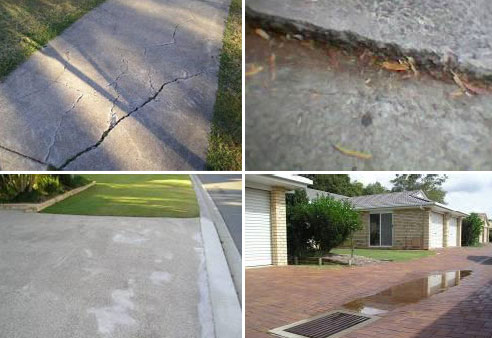NEWS ARTICLE ARCHIVESElectronic Blueprint guide to residential pavement design AS 3727 was published in 1993 to provide guidance on the design and construction of concrete, asphalt, bituminous spray-seal and segmental pavements, for use in residential construction. The scope is spelt out in AS 3727 Clause 1, which states. This Guide provides guidelines for the selection and construction of pavements associated with residential buildings consisting of single houses or multiple dwellings in medium density housing development. It does not apply to the design and construction of pavements in public roads or streets. AS 3727 Clause 5 spells out the acceptable serviceability criteria, for at least one year after construction, in terms of:
The key words are "may be assessed" by the one year criteria. Although this infers that failure to meet the criteria during the first year of services is an indicator of unacceptable performance; it does not mean that failure to meet the stated criteria, later during the design life, is considered unacceptable.
AS 3727:1993 Clause 5.2 � Performance Objectives - Cracking, Subsidence and Stepping
AS 3727:1993 Clause 5.3 � Performance Objectives � Chipping and Spalling This performance requirement does not apply asphalt pavements.
There should be no more than 10 in any adjacent 100 segmental paving units having chipped or spalled arises. In the absence of a definition of "chip" or "spall" in the Standard, it is suggested that "common sense" should prevail. As a guide, any blemish under 5 mm wide or long should not be counted as a "chip or spall" for purposes of the performance monitoring.
There should be no chipping or spalling in concrete pavements. As for segmental pavements, it is suggested that "common sense" should prevail and any blemish under 5 mm wide or long should not be counted as a "chip or spall".
AS 3727:1993 Clause 5.4 � Performance Objectives � Slip Resistance
The surface texture should have slip resistance appropriate for the pavement slopes as required by AS 3661.1 AS 3661.1 is standard that is now superseded by AS/NZS 4586:2004 for new surfaces and AS/NZS 4663:2004 for existing surfaces. AS 3727:1993 Clause 5.5 � Performance Objectives � Ponding
Ponding deeper than 10 mm should not occur more than 15 minutes after cessation of rainfall. The most practical way of satisfying this requirement is to ensure that the pavement has adequate cross falls and drainage. If the pavement suffers rutting, this will exacerbate any ponding problems.
|
 |
 |